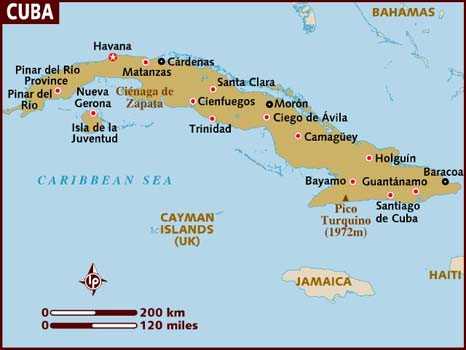The need about increasing the current levels of coffee production is the goal for the almost 20,000 Cuban Agricultural and Forestry workers who live in the local mountainous territory, the 40% of the nation’s surface, although that crop will be planted in the plains of the Caribbean nation.
The current levels of production barely surpass the 7.000 tons of coffee annually.
Therefore, Cuba is forced to import some 10.0000 tons each year which is a number that they do want to gradually reduce to zero in the near future, according to the local coffee development program that was conceived until the year 2030 in which it is planned to achieve the 17.000 tons as part of a first stage.
It is important to highlight that such efforts have required substituting a high percent of the 60.000 hectares dedicated to the coffee plantation in Cuba for new plantations as those ones were really deteriorated, taking into account they had a very low related yielding.
Moreover, an investment program for the infrastructure of the processor enterprise is being carried out on those plantations, along with the improvement of the related technology through the two hundred and half processor industries of that really valued grain.
The main productive sector is located in Santiago de Cuba, Guantánamo, Granma and Holguín provinces in the eastern part of the nation and Villa Clara, Santí Spíritus and Cienfuegos provinces in the central part, as well as Artemisa and Pinar de Río in the western one.
Interviewed by the local Radio Rebelde station, Elexis Legrá Calderín, who is the director of the Café, Cacao Y Coco enterprise of the Agricultural Forestry group (GEAF) that is part of the Ministry of Agriculture, said that the other objective of that productive branch is precisely to increase the coffee delivery for the local Food industry in order to contribute to the improvement of that highly demanded product by the population through its rationed delivery to each family, besides, he added that it was being encouraged the high increase of the cacao production that is exclusively from the Cuban eastern region and the coconut that used to be in Baracoa town only, taking into account that its sowing and harvesting is being taken nationwide.
Likewise, Arturo Foirteza Valdés, who is the vice president of the local GEAF, explained that apart from the coffee, coconut and cacao, that business structure includes the Forestry, Beekeeping and other branches like the cattle, the varied crops and vegetables which allows to be very competent in their work and taking a much better advance of the cultivable lands of the Cuban mountains and the available resources with a higher efficiency and contributions for the local economics.
“The improvement of the life conditions in the mountains, along with the increase of the basic services for their inhabitants such as the family-doctor health policy, the schools, bakeries, post offices, banks, barbershops, workshops for their fixing electronic equipments, among other social services, have allowed to stop the previous exodus and increasing the presence of its inhabitants.” Forteza Valdés stated.
José Carera Peinado


















